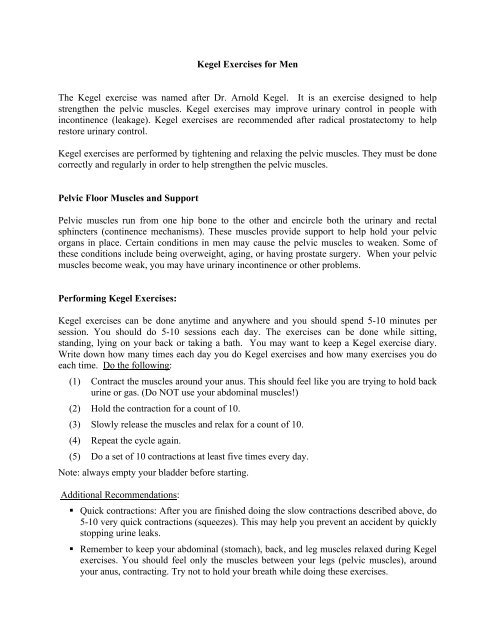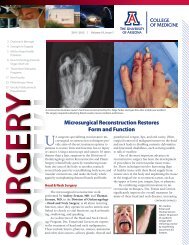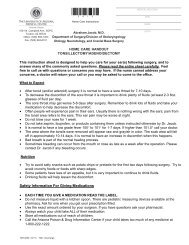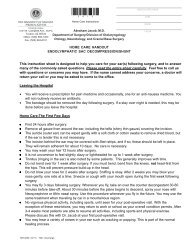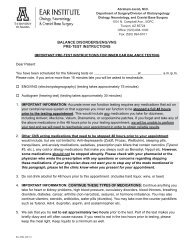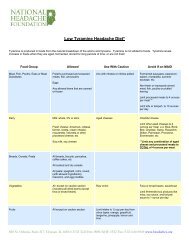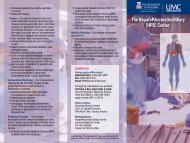Kegel Exercises for Men The Kegel exercise was named after Dr ...
Kegel Exercises for Men The Kegel exercise was named after Dr ...
Kegel Exercises for Men The Kegel exercise was named after Dr ...
You also want an ePaper? Increase the reach of your titles
YUMPU automatically turns print PDFs into web optimized ePapers that Google loves.
<strong>Kegel</strong> <strong>Exercises</strong> <strong>for</strong> <strong>Men</strong><br />
<strong>The</strong> <strong>Kegel</strong> <strong>exercise</strong> <strong>was</strong> <strong>named</strong> <strong>after</strong> <strong>Dr</strong>. Arnold <strong>Kegel</strong>. It is an <strong>exercise</strong> designed to help<br />
strengthen the pelvic muscles. <strong>Kegel</strong> <strong>exercise</strong>s may improve urinary control in people with<br />
incontinence (leakage). <strong>Kegel</strong> <strong>exercise</strong>s are recommended <strong>after</strong> radical prostatectomy to help<br />
restore urinary control.<br />
<strong>Kegel</strong> <strong>exercise</strong>s are per<strong>for</strong>med by tightening and relaxing the pelvic muscles. <strong>The</strong>y must be done<br />
correctly and regularly in order to help strengthen the pelvic muscles.<br />
Pelvic Floor Muscles and Support<br />
Pelvic muscles run from one hip bone to the other and encircle both the urinary and rectal<br />
sphincters (continence mechanisms). <strong>The</strong>se muscles provide support to help hold your pelvic<br />
organs in place. Certain conditions in men may cause the pelvic muscles to weaken. Some of<br />
these conditions include being overweight, aging, or having prostate surgery. When your pelvic<br />
muscles become weak, you may have urinary incontinence or other problems.<br />
Per<strong>for</strong>ming <strong>Kegel</strong> <strong>Exercises</strong>:<br />
<strong>Kegel</strong> <strong>exercise</strong>s can be done anytime and anywhere and you should spend 5-10 minutes per<br />
session. You should do 5-10 sessions each day. <strong>The</strong> <strong>exercise</strong>s can be done while sitting,<br />
standing, lying on your back or taking a bath. You may want to keep a <strong>Kegel</strong> <strong>exercise</strong> diary.<br />
Write down how many times each day you do <strong>Kegel</strong> <strong>exercise</strong>s and how many <strong>exercise</strong>s you do<br />
each time. Do the following:<br />
(1) Contract the muscles around your anus. This should feel like you are trying to hold back<br />
urine or gas. (Do NOT use your abdominal muscles!)<br />
(2) Hold the contraction <strong>for</strong> a count of 10.<br />
(3) Slowly release the muscles and relax <strong>for</strong> a count of 10.<br />
(4) Repeat the cycle again.<br />
(5) Do a set of 10 contractions at least five times every day.<br />
Note: always empty your bladder be<strong>for</strong>e starting.<br />
Additional Recommendations:<br />
Quick contractions: After you are finished doing the slow contractions described above, do<br />
5-10 very quick contractions (squeezes). This may help you prevent an accident by quickly<br />
stopping urine leaks.<br />
Remember to keep your abdominal (stomach), back, and leg muscles relaxed during <strong>Kegel</strong><br />
<strong>exercise</strong>s. You should feel only the muscles between your legs (pelvic muscles), around<br />
your anus, contracting. Try not to hold your breath while doing these <strong>exercise</strong>s.
More In<strong>for</strong>mation about <strong>Kegel</strong> <strong>Exercises</strong>:<br />
<br />
<br />
<br />
<br />
<br />
It may take several months <strong>after</strong> starting <strong>Kegel</strong> <strong>exercise</strong>s to see a difference in bladder<br />
control. You may begin to notice improved bladder control <strong>after</strong> only 4-6 weeks.<br />
Do not stop doing <strong>Kegel</strong> <strong>exercise</strong>s until you have talked to your caregiver. <strong>Kegel</strong><br />
<strong>exercise</strong>s may be useful <strong>for</strong> the rest of your life.<br />
Don’t overdo your <strong>Kegel</strong> <strong>exercise</strong>s. Like any <strong>exercise</strong>, it’s important to build up slowly,<br />
and pay attention to your body. If you are experiencing pain or discom<strong>for</strong>t or notice blood<br />
in your urine, you are pushing yourself too hard. It is possible that you could strain the<br />
muscles and aggravate a current problem, when you are trying to resolve it.<br />
When you are at the toilet urinating, practicing starting and stopping your urinary stream<br />
using the same muscles you have been strengthening with the <strong>Kegel</strong> <strong>exercise</strong>s.<br />
Tighten your pelvic muscles be<strong>for</strong>e sneezing, coughing, or lifting to prevent urine<br />
leakage.


